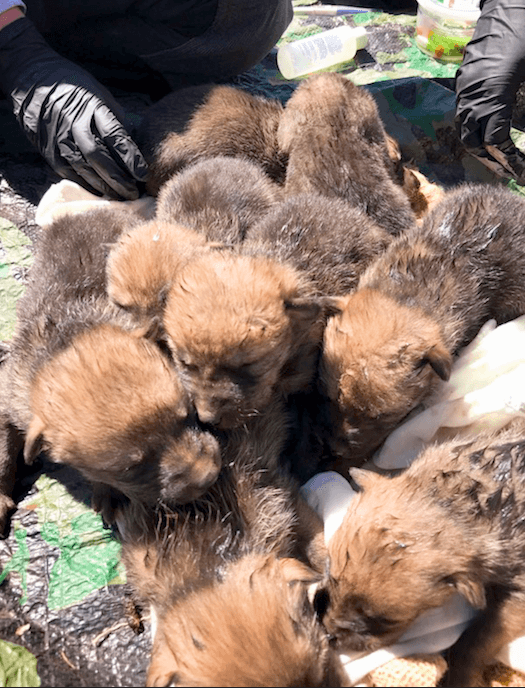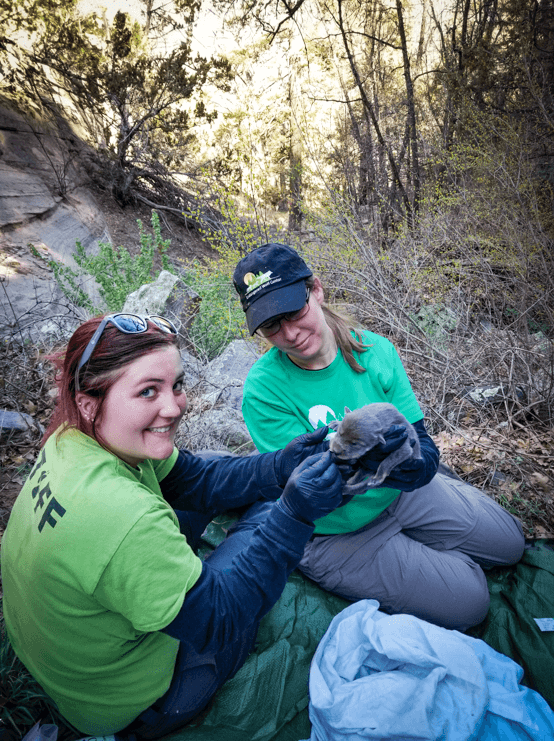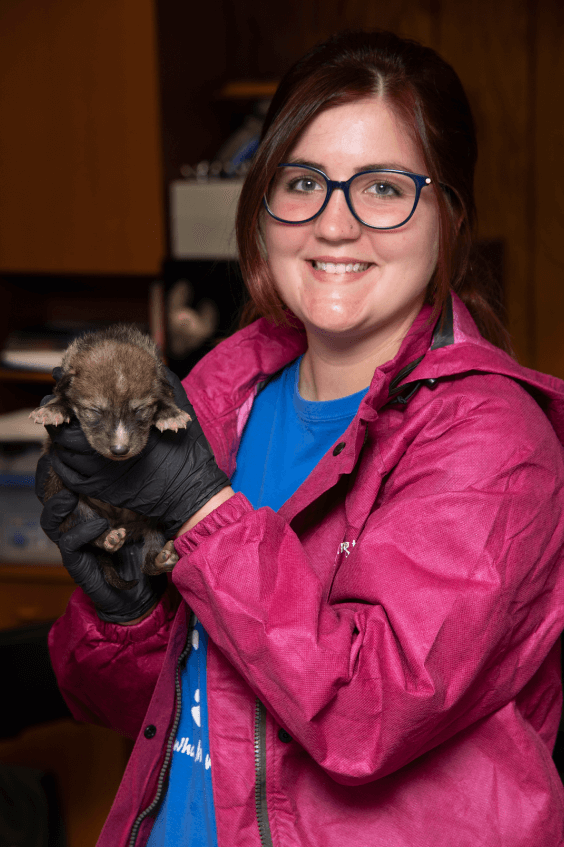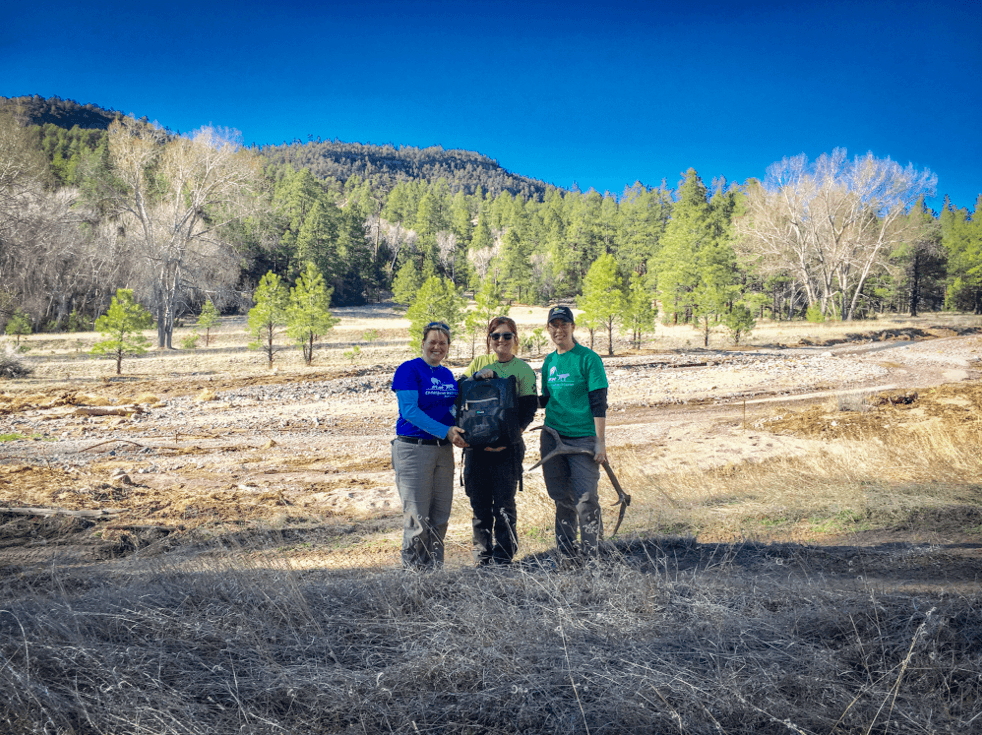Puppy season is officially in full swing! And it is one for the history books!
We are happy to announce that last week, we were able to foster six critically endangered Mexican wolf pups into two different wild packs!
This is the first time six pups have been fostered at one time.
Fostering (sometimes called cross-fostering) is a technique where wolf pups from one litter in human care are placed with another litter in the wild in hopes that the wolf mother will adopt the additions as her own.
Fostering wolf pups is possible because wolves are such wonderful parents.
“Saving species requires creativity and breakthroughs in conservation techniques,” said Regina Mossotti, Director of Animal Care and Conservation at the EWC, “and this cross-foster was a great example of the U.S Fish and Wildlife Service, the EWC and the states working together to seize a unique opportunity to help Mexican wolves.”
Fostering is kind of a big deal. Why?
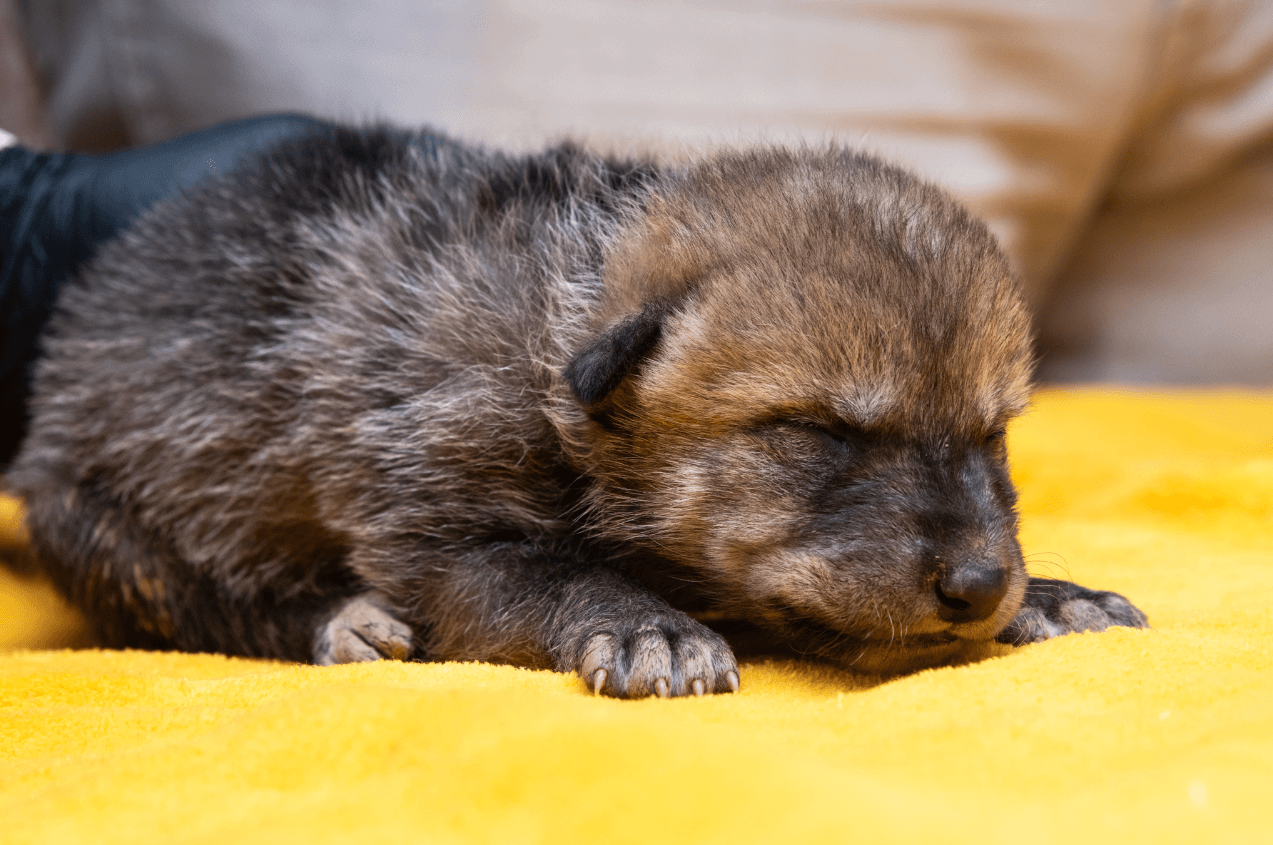
I’m going to grow up WILD!
Placing pups from managed care into a wild litter not only increases the population size in the wild, but also provides crucial genetic diversity to improve the overall health of a critically endangered population.
Bonus points: Now these pups will have wild parents with wild experience and an established territory to teach them how to survive in their new homes.
The experience that their foster parents and new pack will teach them will help them to grow up and, hopefully, become a successful leader of their own family someday.
Fostering is a relatively new technique for the Mexican Wolf Recovery Program and the Endangered Wolf Center has played an integral role in developing this important conservation tool.
Not only does Mossotti manage the EWC’s foster events, she also serves as the Mexican Wolf Species Survival Plan Pup Foster Advisor, where she assists U.S. Fish and Wildlife Services and institutions in the Species Survival Plan on their fostering efforts to ensure that they are successful.
The Plight of the Mexican Wolf
With fewer than 150 individuals left in the wild—mostly found in Arizona and New Mexico—these six pups born at the EWC represent vital new genetics.
You see, once numbering in the hundreds of thousands, extermination programs and habitat loss have led to a dramatic decline. Scientists later learned how important these keystone species were to keeping an ecosystem balanced and healthy. Because of this, in the late 1970’s, an effort was launched to save the Mexican wolf.
The last remaining wild Mexican wolves were captured by U.S. Wildlife Service in an effort to save them.
This meant they were extinct in the wild. Let that sink in.
The seven remaining Mexican wolves were brought into managed care to begin the breeding and recovery program. The last wild caught female, Nina, was brought to the Endangered Wolf Center, where successful breeding efforts grew the population.
In 1998, the first Mexican wolves were released back into the wild in Arizona and New Mexico, where that population has grown to 150 Mexican wolves today.
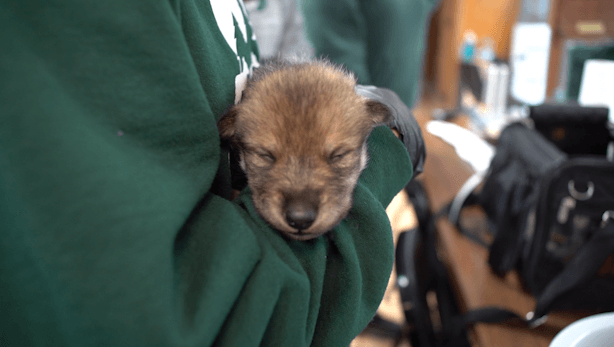
Wake me up when we get to my forever home.
This week, we added six pups to that wild population.
Six might not sound like a lot, but when numbers are this sparse, each and every pup counts. Genetic diversity is critical to the survival of any endangered species, because it reduces inbreeding, giving this population a better chance for healthy pups.
Overcoming all Odds
Extreme terrain and logistics make fostering challenging.
Mexican wolves are native to the alpine region in New Mexico and Arizona, where scouring for dens in the mountainous terrain is difficult.

Rachel Crosby, EWC Animal Keeper, takes a rest on the arduous journey to the wild wolf dens. She carries all 6 puppies on her back! See their little faces?!
Then, there is timing.
Wild and captive litters have to be born within a few days of one another, and the transfer from a zoological facility to the wild has to occur before the pups are 14 days old.
“Everything has to line up…the stars, the sun, the moon, and the planets all have to align to make a foster happen,” said Mossotti.
“There are weather considerations, flights and travel, personnel, locating wild dens, securing funding—all pieces of the puzzle have to come together very quickly to get this done.”
This particular operation almost stopped in its tracks, due to lightning and severe thunderstorms in the St. Louis area on the day of the foster event.
Overcoming the logistics and managing the shifting and potentially dangerous conditions on the ground make the success of the Endangered Wolf Center, the USFWS, and Arizona Game and Fish’s efforts all the more remarkable.
The six pups flew to Arizona, accompanied by Regina Mossotti, EWC Director of Animal Care and Conservation, Erin Connett, EWC General Curator and Rachel Crosby, EWC Animal Keeper.
“Our staff members are experts, and they did an incredible job making sure that these precious pups stayed safe, warm and well-cared for on their journey to the wild,” said Virginia Busch, Executive Director of the Endangered Wolf Center. “Collaboration is key to successful conservation and we are proud of our partnership with the Service working to re-wild Mexican wolves.”
It All Comes Full Circle
This year, several wild packs denned at the exact same time as the pack at the Endangered Wolf Center. Vera (mother) and Mack (father) at the EWC had a litter of nine healthy pups (male pups “Boomer”, “Victor” and “Max” and female pups “Dianne”, “Winnie” and “Laura”).
Having a large litter offered the opportunity to take six pups and place them into two different litters born in the wild. “It is rare to have litters match up, but to have several at once was very exciting!” said Mossotti.
Both the Prime Canyon Pack in Arizona and the Frieborn Pack in New Mexico had a litter at the same time as Vera and Mack.
This foster effort offered another historic first. The Mexican Wolf Fostering Program started a few years ago in hopes of saving this critically endangered wolf, and this year was the first time a foster has happened with a pack lead by a wolf that was a previous foster.
Meaning, “Blaze”, a pup born at Brookfield Zoo in Chicago, was a foster himself three years ago.
His wild foster parents raised him successfully and he has grown into a successful leader of his own pack, and has become a wonderful father.
He is now the alpha male of the Prime Canyon Pack in Arizona. And this year, he and his mate had seven pups.
The EWC added one pup to his litter for a total of eight pups. We are keeping our fingers crossed for this family as their little ones grow.
“Conservation needs multiple tools in the toolbox to work, and we have a new and very effective tool to use to help save Mexican wolves.” said Mossotti. “Knowing that fostering is working, that pups are growing, and helping this endangered population become stronger and healthier is a huge accomplishment. Knowing that these pups’ howls will be heard in the wilds of the American southwest…well, that is one of the most incredible feelings.”
Funded by individual donors and the SeaWorld & Busch Gardens Conservation Fund, we partnered with the U.S. Fish and Wildlife Service (FWS) and the Interagency Field Team (IFT) which consists of the Arizona Game and Fish Department, USDA Forest Service, USDA Wildlife Services, and the White Mountain Apache Tribe. It was truly a team effort to bring these 11-day-old pups born at the EWC to their new homes in the wilds of New Mexico and Arizona.
